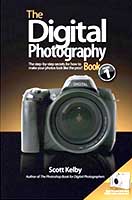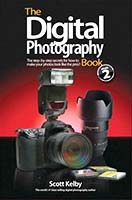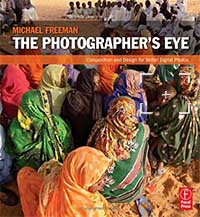As a photographer that photographs models, there’s two primary goals that any website that tries to connect models and photographers should aim for:

2. Assisting the client in finding the right photographer.
All else is peripheral.
The idea is that if you’re a model looking for work, you post your portfolio online and photographers approach you with gigs. Conversely, if you’re a photographer, you post your portfolio and jobs start coming out of the wood work. The reality is that few sites can deliver on the promise adequately, not to a fault of the site’s objective, but due to design, business model complexities, or subtleties pertaining to the problem of brokering.
Naturally, for any such site to work you’re going to need a critical mass of both kinds of users just to have a wide enough selection to make this happen. As such, it’s important not to alienate users — something that is very easy to do with bad design or practice. It’s not enough that a site be free.
The closest site that I’ve come across that seems to have the right idea is www.ModelMayhem.com. It’s search capability is right on target. You tell it that you are looking for models in your local area that are some number of miles from your zipcode, that are between the ages of 18-24, female, 5’2″ – 5’7″, olive skin, with shoulder length black hair, green eyes, and poof — out pops a number of candidates.
This is the way it should work. You tell the criteria about what you need, and it finds people with those attributes.
The problem is the interface is klunky, the portfolio space limited, the navigation is horribly disorganized, and pretty much anything other than models is left wanting. Yet it’s still usable.
I wish it had a way to describe the kinds of services photographers offered and made them in a searchable fashion as well. Oh well, at least finding models isn’t problematic.
Such locator services are not a social network, nor are they a dating service. They’re supposed to be resources that connect professional with professional, with the added bonus of having a reasonable idea of what you’re getting. It frustrates me when a site is designed around chit-chat and messaging. Simply put let one professional find another, preview their work, and then get in contact with them by email; don’t obscure things. A site that works gets traffic, it doesn’t need fudging to get visitors.
Conversely, I just deleted my account over at www.aMuseBook.com, a web site that professes to do the same thing: connect models and photographers. I’d argue not only that it doesn’t, but that it physically can’t in my personal opinion — it’s a business model problem gone awry.
While better organized, and certainly much prettier, it’s search capabilities are downright awful. The best geographical resolution is state-level. So, if you’re looking for a model in Texas, that’s all of Texas. Additionally, providing search criteria for attributes just isn’t possible, which means locating a specific model by looks isn’t doable. And if you can’t find candidates, you aren’t going to be hiring.
Here’s another bad design choice that just seems obvious. If you want to find a model, you typically are looking for an age bracket, yes? Well, the site doesn’t let you search by age, instead you have to search by a specific birthday, which is stupid. Oh, and that’s a Day – Month – Year birthday at that. Even searching by year alone isn’t helpful, because simply year subtraction doesn’t give age.
Now while aMuseBook does give you more space to store your photos, it unlocks features using a point system. You gain points by commenting on people’s pictures and telling your friends to join. What becomes transparent very quickly is that the site is not structured to make contacts, but to get you to churn through pages so that Google Ads get thrown in your face generating an alternate revenue stream. I quickly got tired of being told in every email I have to “use” the site and it will ‘work’ for me.
Hogwash. If I can’t locate a model or post a comprehensive portfolio, then neither I, nor the models, are getting any serious value out of the site.
Adding insult to injury, the site gives you the ability to provide URLs to your own site; this sounds good at first, until you realize that many models and photographers keep their photos on Flickr. Why? Because Flickr is great for managing photos. But what does aMuseBook do for those sites? It blocks them out, showing up as www.*****.com, and when I questioned the site admin about it, I got back a response stating they didn’t want their site for depositing competitor URLs and not another portfolio site.
Wait a second. The service is there to help me find people by showing them my portfolio but they don’t want me to show them my portfolio if it’s elsewhere? Plus I can’t post my portfolio unless I leave comments that I wouldn’t have otherwise. That’s stacking the deck and gives unrealistic feedback. And when points are rewarded for clicking on ads, I’m pretty sure that’s against Google’s terms of service for AdSense.
If people are churning pages leaving “Nice smile” comments, how is one to know which comments are real (and therefore useful) versus people just trying to collect points? The information itself becomes devalued. Thus the business structure and the design alienates users in the short term, while the lack of utility alienates them in the long term. It can’t be viable.
And that’s why I deleted my account over there: It wasn’t usable or productive.
No wonder it’s so hard for models and photographers to get connected. I wish there were a simple directory that focused on doing one thing and one thing well, connecting professionals. It’s a hard problem, but the person that cracks that nut can steal a whole lot of business from all these other sites without trying too hard.
Fundamentally, the problem is that a brokering agent has to provide and organize information. Limiting it, not being able to search it, or failing to have a positive user experience drives away the very assets that are needed to make the site work. This appears to be a case where a well simple organized directory could be a winner-take-all.
UPDATE: I have found an awesome site for models, photographers, and makeup artists. It’s call Miss Online and it allows unlimited photo uploads with no point limitation schemes. It also includes discussions, groups, blogs, and email. The site is very active and quite attractive to use; advertising is at a minimum, and you aren’t coerced into clicking through tons of pages. Plus, and here’s the real proof: as a photographer I’ve had more exchanges with models with this one site than all the other sites combined. It does get you connected.







